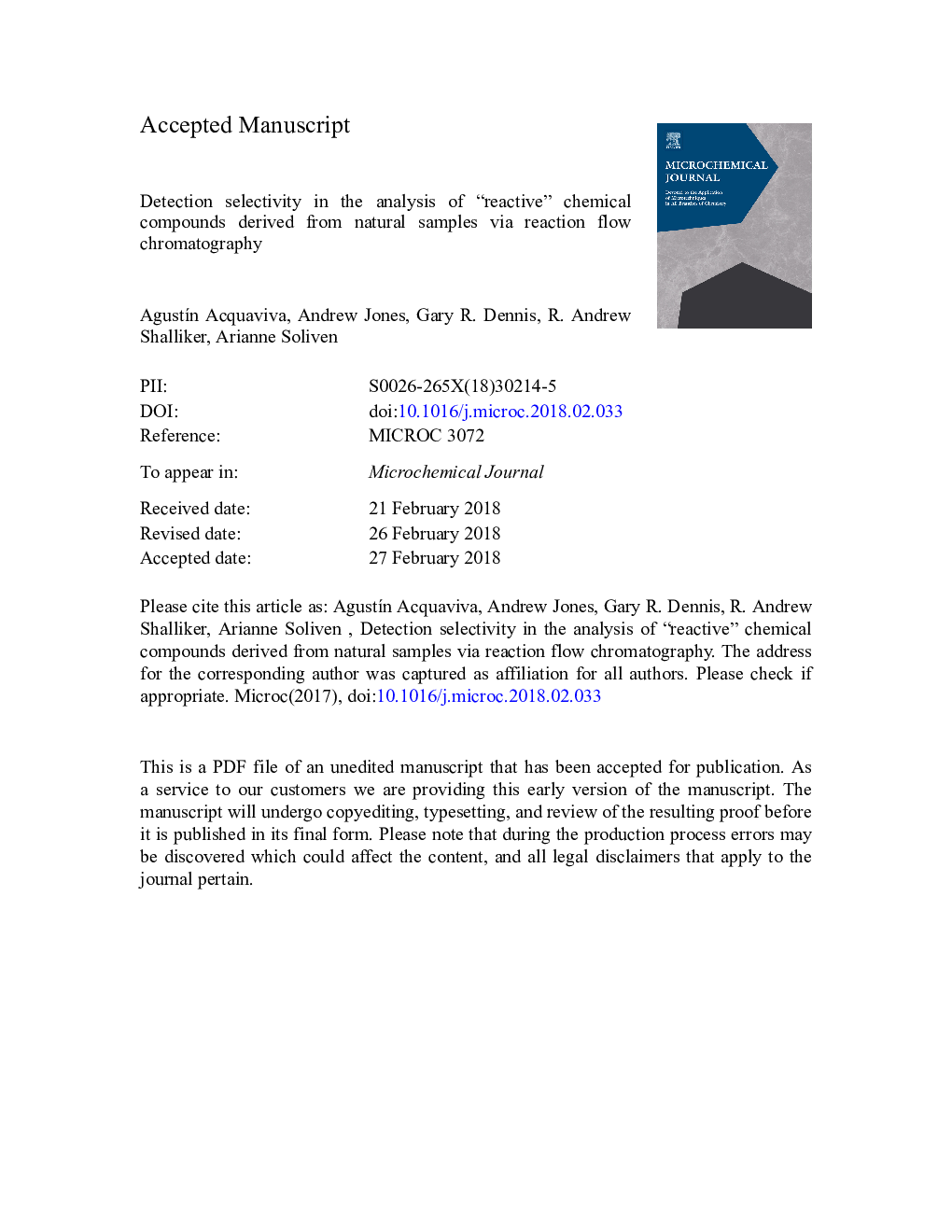| Article ID | Journal | Published Year | Pages | File Type |
|---|---|---|---|---|
| 7640841 | Microchemical Journal | 2018 | 22 Pages |
Abstract
The study of two commonly used post-column derivatisation (PCD) approaches for the selective detection of “bioactive” compounds in natural products were investigated - the 'phenolic' assay as the name suggests was responsive to phenolic compounds, while the Ferric Reducing Antioxidant Power (FRAP) assay was responsive to antioxidants. Detailed assessment of the peaks (based largely on retention time) that were observed in both detection modes for five beverage samples (four teas and one coffee) revealed the presence of a total of 56 compounds. Eight compounds were not detected by the FRAP assay and 13 were not observed by the phenolic assay. A geometric approach to factor analysis (GAFA) was applied to the detection sensitivity, and this analysis showed the correlation between these two assays was 0.67 and the spreading angle between the detection vectors was 47°. Such outcomes are usually indicative of a multidimensional separation approach, but in this study this was achieved only from the detection protocol. Hence, when employing PCD to determine the 'activity' of samples derived from natural origin, testing should be conducted using multiple selective detection processes.
Keywords
Related Topics
Physical Sciences and Engineering
Chemistry
Analytical Chemistry
Authors
AgustÃn Acquaviva, Andrew Jones, Gary R. Dennis, R. Andrew Shalliker, Arianne Soliven,
